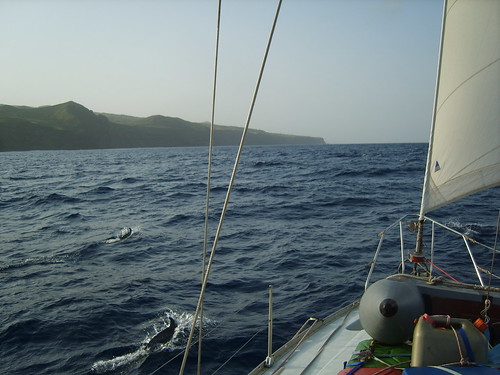After Santago came Fogo and on Fogo, there is a volcano. So we visited the volcano, in two groups so as not to leave the boat unattended. I stayed on board the first day and had a good time snorkeling and enjoying the island life.
The second day, Spencer and I got serious and we climbed the volcano. It's the toughest hike on Fogo and takes up to 6 hours. We started early and with the help of our guide we climbed the 1200 Metres up the slope of the mountain. We were glad to bring plenty of water as the sun rose over the crater rim. A short traverse over a lapili field - which are very small lava particles - almost brought me to my knees, as I was sliding down 90 percent of each step. It was described in the guidebook as the heaviest part of the climb, and this was no lie.
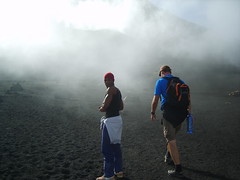
The rock climbing was on the limit of what I could do, but this was mostly due to all the loose rocks requiring the utmost concentration.
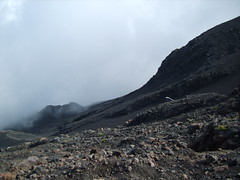
After three hours, we reached the crater mouth and had a magnificent view of the inside. The height is over 2800 Metres and for the first time, I experienced a lack of oxygen on this height. Also, the smell of sulphur was overwhelming.
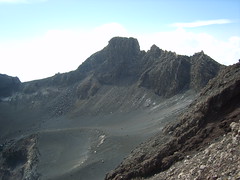
After some food and a lot of water, we started the trip down. The first part is relatively hard, with a lot of loose rocks but luckily not too steep. It is an entirely different path from that to climb the volcano, to minimize the risks. After that, there is just endless fields of lapili, which you can run down as fast as you dare. Some parts we ran down hand in hand with the guide untill I got tired from running. The trick was braking in the gravel whenever you got up to too high speed.
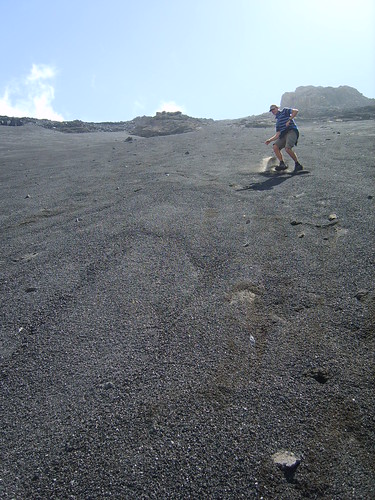
After 30 minutes, we were down to a road leading to Châ de Caldeirao, the village on the floor of the ancient crater. We drove back to the boat to rest from our ascent of this master of all volcanic cones.
